Get out your play dough, kinetic sand, oobleck, clay, sand, or other sensory base, it’s time to learn some writing skills!
Nope, I did not make a mistake there. We truly can help support writing skills with little ones without using a pencil and paper. Children need lots of fine motor practice and development before they even pick up a pencil. Writing is a complex skill that requires strength, coordination, and repetitive movements.
Before a child learns to write they need to squeeze, tear, pinch, point, poke, and manipulate. So, what better way to do that than with a little fun and sensory play.
Children, especially toddlers, crave independence and power. If you only practice writing and fine motor skills with worksheets and paper and pencil type activities then you might have seen lots of power struggles and tantrums.
These types of activities are not developmentally appropriate for toddlers or even for some preschoolers. Yes, they give you a sense of accomplishment and pride in a finished product where they traced the letter H, but it did not allow for much learning and development compared to hands-on and open-ended sensory exploration.
Besides developing the fine motor strength, control, and coordination needed for writing, sensory play also offers toddlers and preschoolers learning and development in multiple areas.
They learn:
- Language and communication
- Vocabulary
- Social skills
- Persistence
- Focus and self-control
- Gross motor skills like balance and proprioception (knowing where your body is in space and how to move it appropriately)
- Making connections
- Critical thinking and problem-solving skills
- Taking on challenges
Wow, so much learning packed into a simple activity! You can learn more about the importance of sensory play in my post “What’s the Deal with Sensory Play?”
So, you are on board and ready to promote those fine motor skills necessary for writing through sensory play, how do you set it up to optimize that learning?
One way I have found that setting up play dough and other similar sensory bases in a way to support those skills is by putting the dough in ice cube trays, muffin tins or something similar. When you put the dough in a container like that, it supports or almost forces your child to reach for the play dough with a pincer grasp. The pincer grasp is crucial for holding writing utensils.
They can also reach with just one finger, but it gets away from a whole hand grab and focuses the strength and coordination on one finger at a time.
Keep scrolling to see how we played.
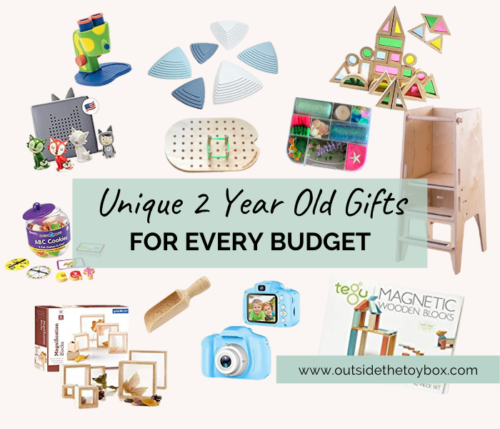
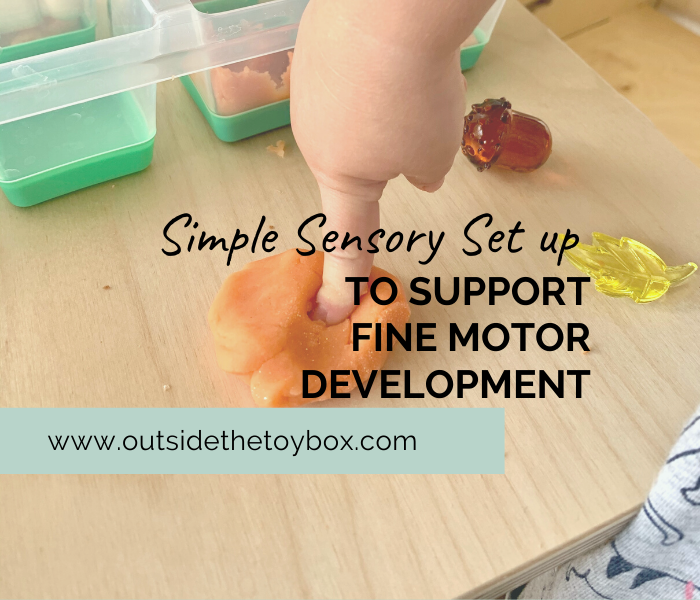
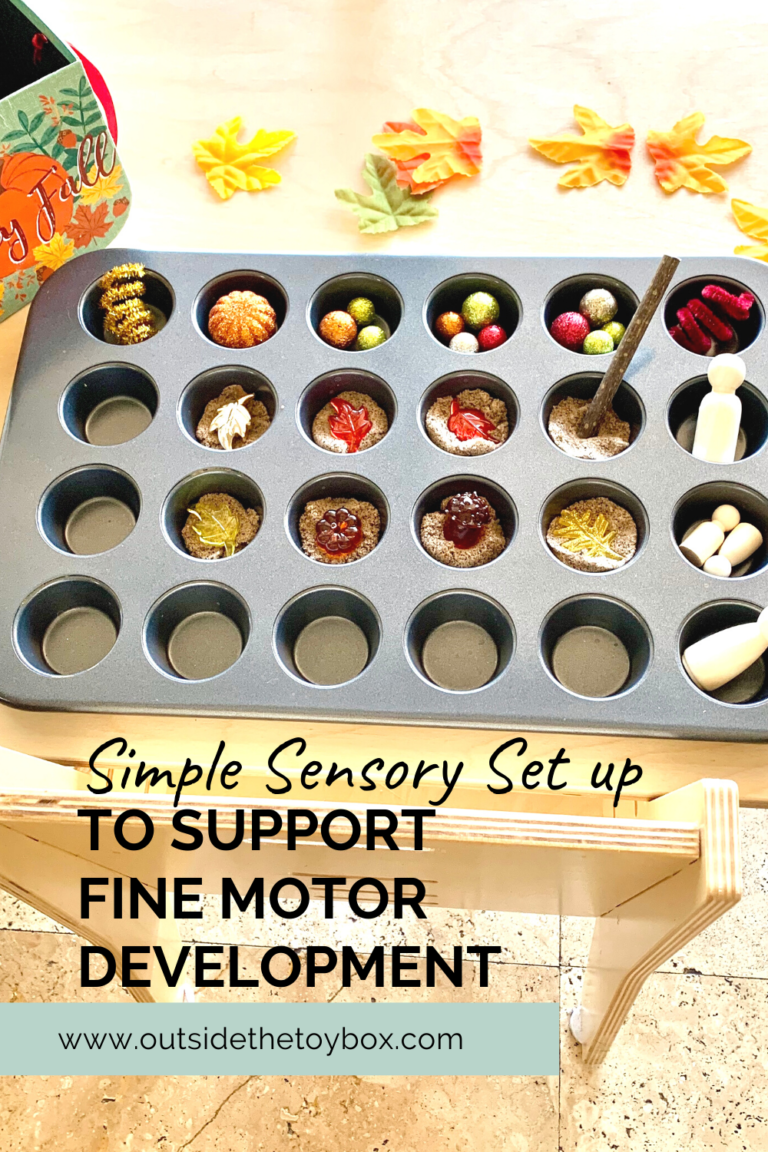
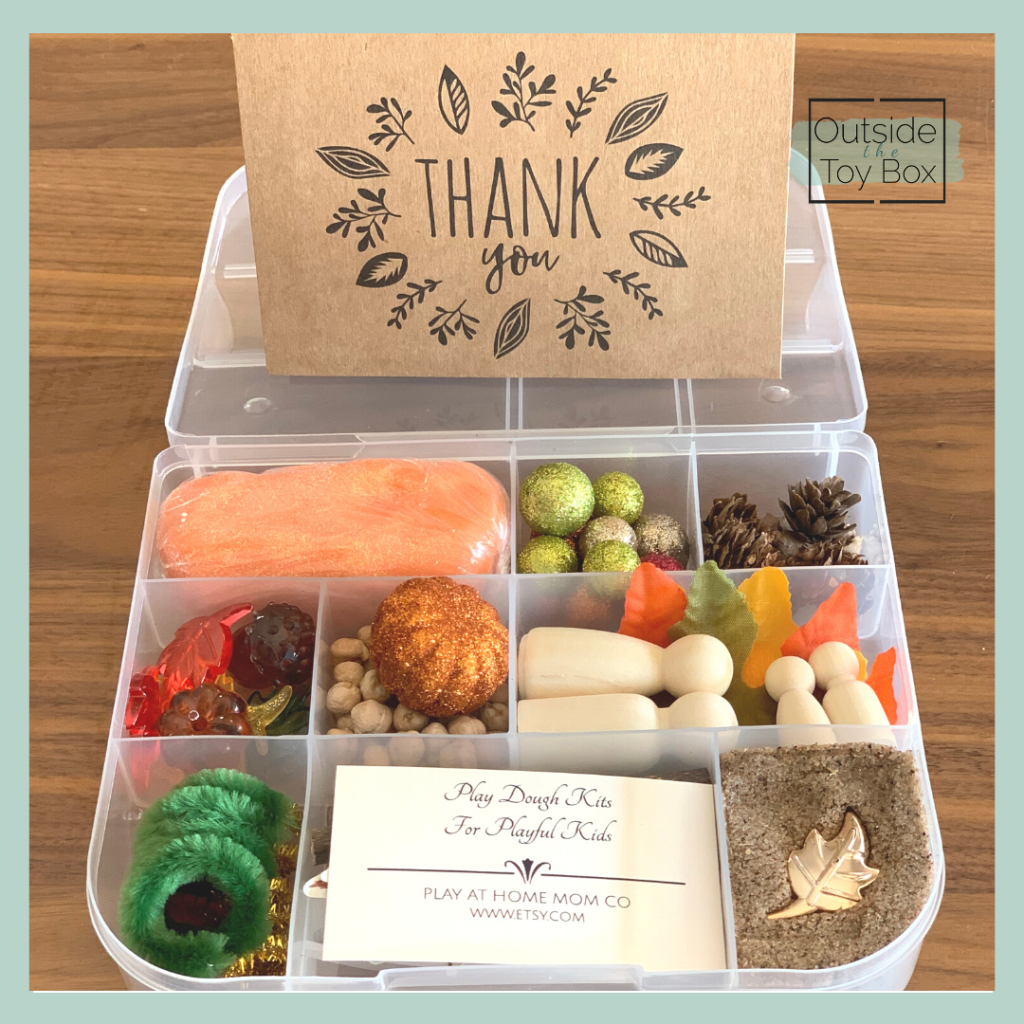


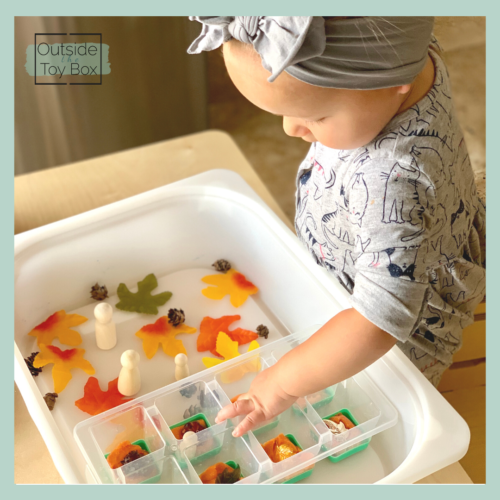
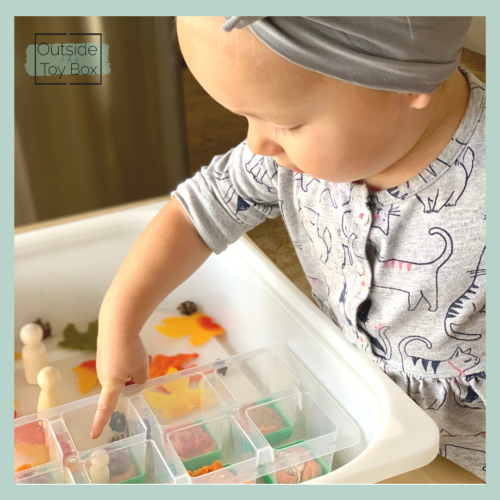
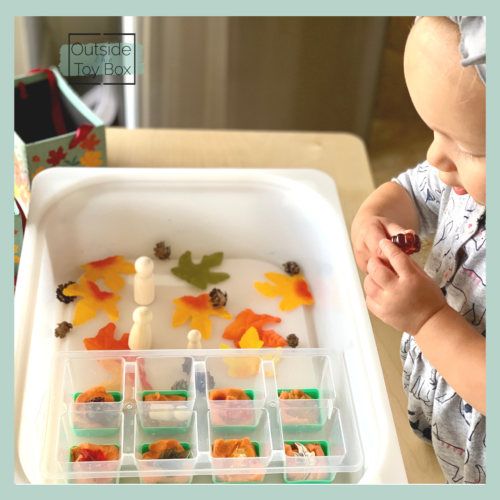
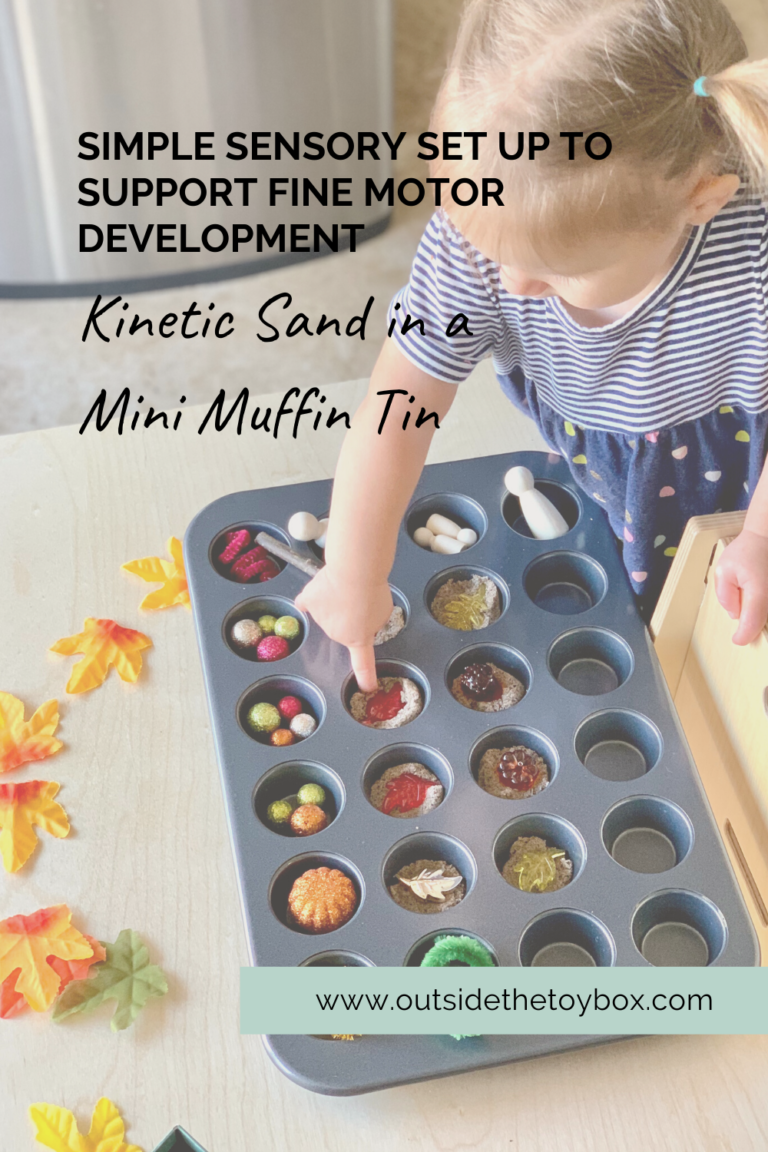
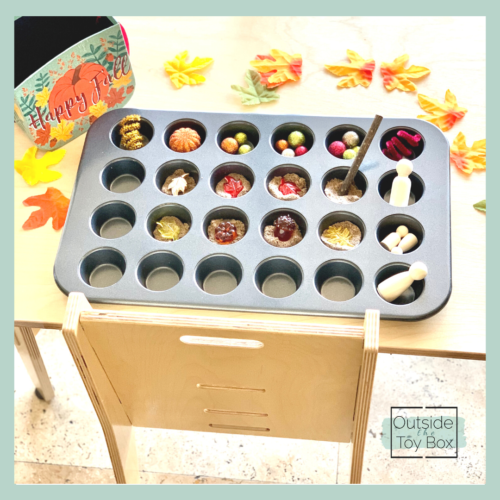
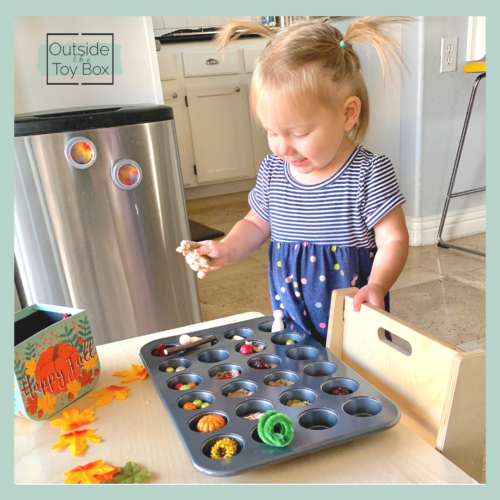
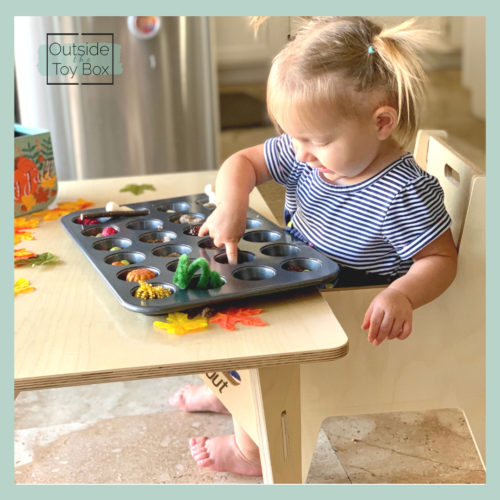
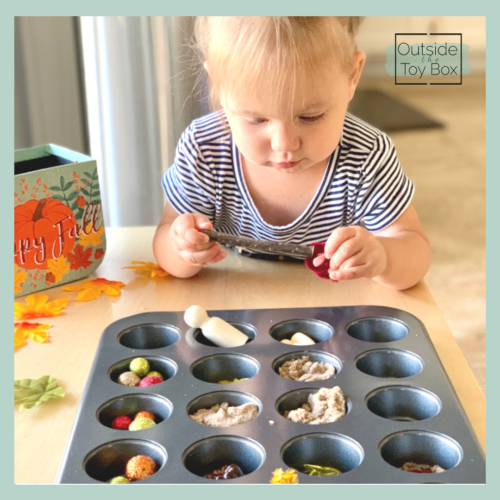
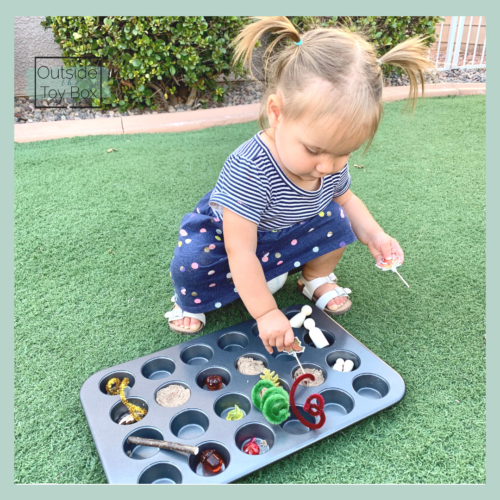
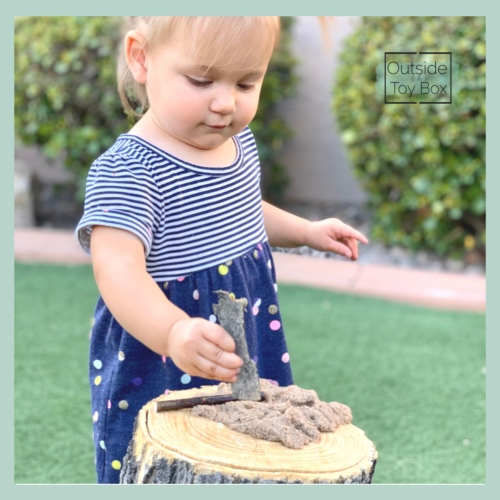

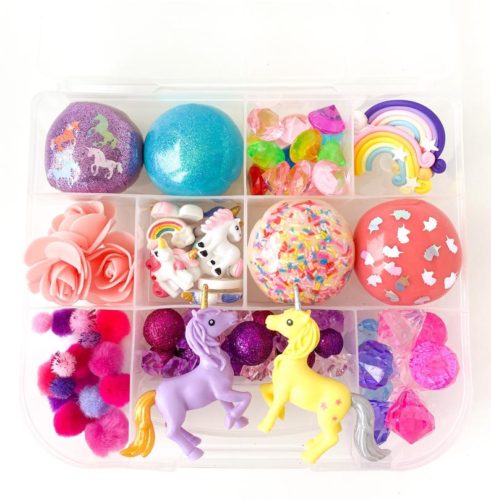
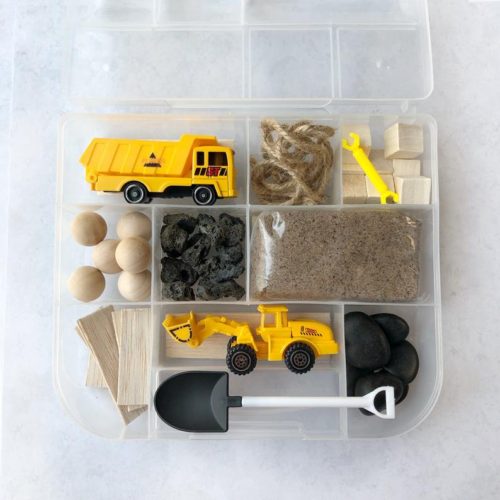
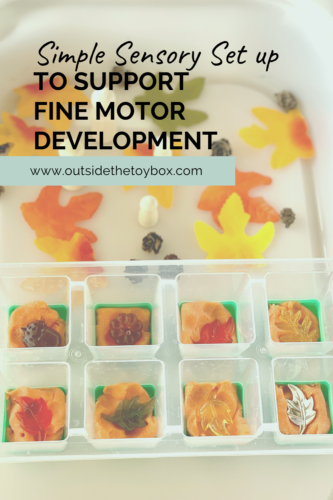

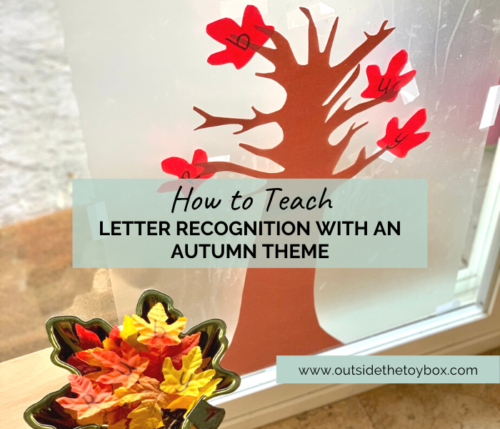
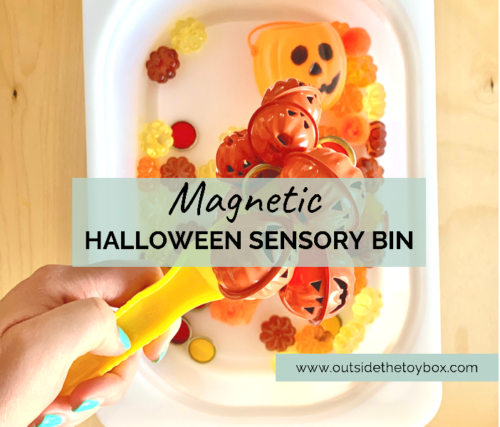
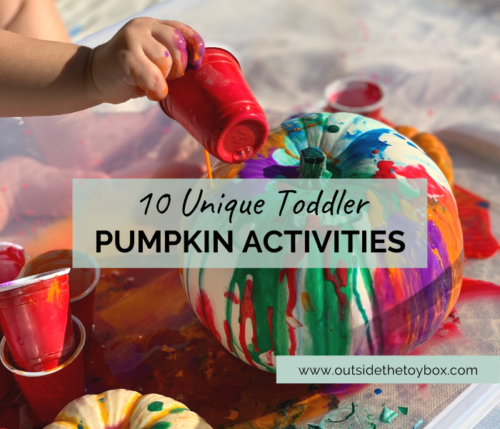
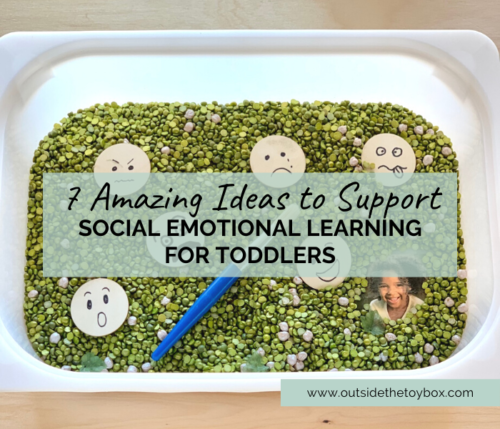
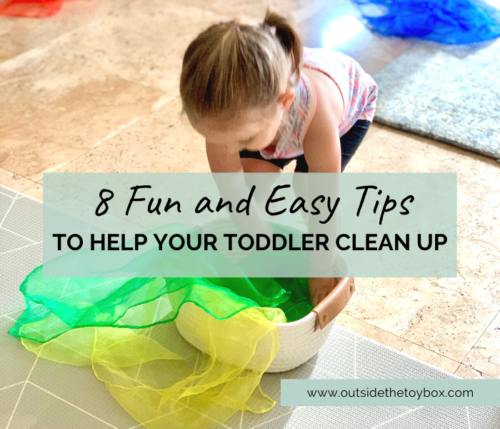
2 thoughts on “Simple Sensory Set up to Support Fine motor Development”